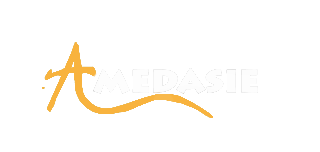Therefore, this means that even with limited funds, you brokerage firm financial definition of brokerage firm can gain exposure to a significant position in the market. Without any open positions, your entire balance is considered your free margin, allowing you flexibility in deciding how much of it to use for trading. As a Forex trader, understanding the different types of margin is a crucial part of effective risk management. Margin isn’t just a one-size-fits-all concept; there are specific types of margins that traders should be aware of, each serving a unique purpose in the trading process. Knowing the margin requirement helps traders understand how much capital they need to allocate for a trade, ensuring they don’t overextend themselves.
How Does Margin Trading in the Forex Market Work?
Margin Level allows you to know how much of your funds are available for new trades. Now that we know what Buy Stop and Buy Limit orders are, it’s time to find out about the pending order that combines the two. This is called the “Buy Stop Limit” and at the time of making this video, … A trend reversal marks the end of an existing trend and the beginning of a new one.
How Social Media Has Impacted Trading
Let’s say you want to purchase a single product with a value of $1000. Depending on your broker, they will require you have this deposit amount, sitting in your account. The funds that now remain in Bob’s account aren’t even enough to open another trade. And then with just a small change in price moving in your favor, you have the possibility of ending up with massively huge profits.
What is margin in forex?
And when you trade forex, this percentage is known as the Margin Requirement. If not met, the broker closes the position at a $1,500 loss to avoid further losses while the trader still has $8,500 equity remaining. For example, with 2% margin, the margin when genius failed summary review pdf call triggers when equity falls to 3%. Traders must quickly add funds to restore equity above 3% or face liquidation.
Leverage vs Margin: What’s the Difference?
As equity approaches the margin requirement, forex brokers issue margin calls. This demands traders deposit additional funds to bring the equity above the margin. If left unmet, brokers close positions to prevent further losses beyond the margin. With a 1% margin requirement, you can control a position worth $200,000. Trading forex on margin enables traders to increase their position size. Margin allows traders to open leveraged trading positions, giving them more exposure to the markets with a smaller initial capital outlay.
Knowing your Margin Level is essential as it indicates the amount of available funds you have for new trades. It reflects the health of your account and influences your trading decisions. Margin provides traders with the flexibility to maximise their trading opportunities without having to deposit the full value of each trade. Attend webinars, read books, and participate in trading forums to gain insights and learn from experienced traders. You open a position that requires you to have $2,000 in your account.
- It’s essentially a security deposit, ensuring traders have sufficient funds to cover potential losses from the outset of their trade.
- And success depends on a trader’s ability to be profitable over time.
- Leverage, on the other hand, enables you to trade larger position sizes with a smaller capital outlay.
- If you wish to trade a position worth $100,000 and your broker has a margin requirement of 2%, the required margin would be 2% of $100,000, which is $2,000.
To buy or sell 100,000 EUR/USD units without leverage would require the trader to put up $100,000 in account funds, the full value of the position. – Reduce leverage and trade smaller sizes if you have limited capital to meet margin calls. ATFX implements a tiered margin system, which means that the broker sets varying margin requirements based on different exposure levels.
During extreme volatility, margin calls become more likely and require close monitoring. Margin Level plays a vital role in forex trading, influencing your ability to initiate new trades. Forex brokers utilize this indicator to evaluate your account’s readiness for further trading activities. Margin trading allows you to control large trade positions with less capital.
Having a good understanding of margin is very important when starting out in the leveraged foreign exchange market. It’s important to understand that trading on margin can result in larger profits, but also larger losses, therefore increasing the risk. Traders should also familiarise themselves with other related terms, such as ‘margin level’ and ‘margin call’. Lower margin requirements mean higher leverage, increasing the trading amount per dollar deposited.
When you have no active trades, your Margin Level will be at ZERO, indicating no available funds for additional positions. Some brokers charge interest on the money you borrow to open a margin position. Over time, these charges can accumulate, especially if you hold positions open for extended periods. This allows you to set a predetermined level at which your position will automatically close, limiting potential losses. If you are looking to open a new position and there is not sufficient free equity in your the millionaire next door trading account, then your broker won’t allow that position to be opened.
Assuming your trading account is denominated in USD, since the Margin Requirement is 4%, the Required Margin will be $400. This mini lot is 10,000 dollars, which means the position’s Notional Value is $10,000. You want to go long USD/JPY and want to open 1 mini lot (10,000 units) position. Choosing the right type of online trading account is an important step in creating your ideal trading environment.Whether you’re new to trading, h… The first currency is called the base currency and the second currency is called the quote currency.

